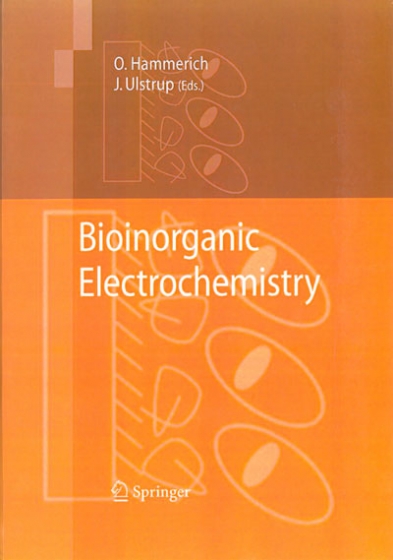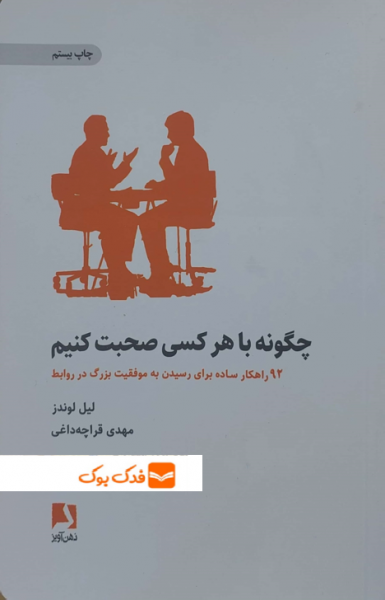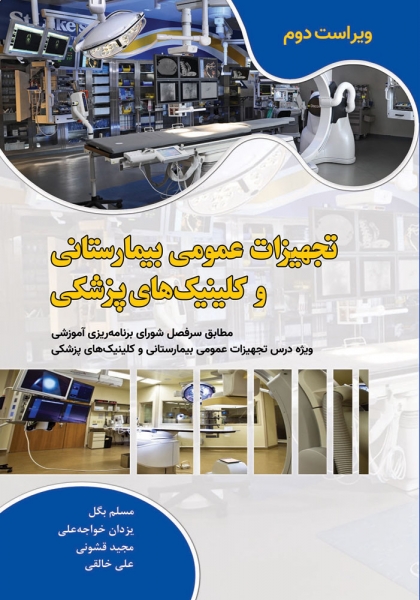Contributing Authors
Tim Albrecht
Department of Chemistry and NanoDTU, Building 207, Technical University of
Denmark, Kemitorvet, DK-2800 Kgs. Lyngby, Denmark
Fraser A. Armstrong
Department of Chemistry, Inorganic Chemistry Laboratory, University of Oxford,
Oxford, OX1 3QR, UK.
Julea N. Butt
Centre for Metalloprotein Spectroscopy and Biology, School of Chemical Sciences and
Pharmacy, University of East Anglia, Norwich, NR4 7TJ, UK.
Qijin Chi
Department of Chemistry and NanoDTU, Building 207, Technical University of
Denmark, Kemitorvet, DK-2800 Kgs. Lyngby, Denmark
Alexander R. Dunn
Beckman Institute, MC 139-74, California Institute of Technology, Pasadena, California
91125, USA.
David G. Fernig
The School of Biological Sciences and The Centre for Nanoscale Science, Chemistry
Department, University of Liverpool, Liverpool, L69 7ZB, UK.
Harry B. Gray
Beckman Institute, MC 139-74, California Institute of Technology, Pasadena, California
91125, USA.
Wolfgang Haiss
Centre for Nanoscale Science, Chemistry Department, University of Liverpool,
Liverpool, L69 7ZD, UK.
Corinna R. Hess
Beckman Institute, MC 139-74, California Institute of Technology, Pasadena, California
91125, USA.
Michael G. Hill
Occidental College, Department of Chemistry, Los Angeles, CA 90041, USA.
Shana O. Kelley
Boston College, Eugene F. Merkert Chemistry Center, Chestnut Hill, MA 02467, USA.
Alexander M. Kuznetsov
The A.N. Frumkin Institute of Physical Chemistry and Electrochemistry of the Russian
Academy of Sciences, Leninskij Prospect 31, 119071 Moscow, Russia
Richard J. Nichols
Centre for Nanoscale Science, Chemistry Department, University of Liverpool,
Liverpool, L69 7ZD, UK.
David J. Schiffrin
Centre for Nanoscale Science, Chemistry Department, University of Liverpool,
Liverpool, L69 7ZD, UK.
Jens Ulstrup
Department of Chemistry and NanoDTU, Building 207, Technical University of
Denmark, Kemitorvet, DK-2800 Kgs. Lyngby, Denmark.
Mårten Wikström
Helsinki Bioenergetics Group, Institute of Biotechnology, University of Helsinki, PB 65,
00014 University of Helsinki, Finland.
Bilha Willner
Institute of Chemistry, The Hebrew University of Jerusalem, Jerusalem 91904, Israel.
Institute of Chemistry, The Hebrew University of Jerusalem, Jerusalem 91904, Israel.
Jay R. Winkler
Beckman Institute, MC 139-74, California Institute of Technology, Pasadena, California 91125, USA.
Harm Van Zalinge
Centre for Nanoscale Science, Chemistry Department, University of Liverpool,
Liverpool, L69 7ZD, UK.
Jingdong Zhang
Department of Chemistry and NanoDTU, Building 207, Technical University of
Denmark, Kemitorvet, DK-2800 Kgs. Lyngby, Denmark.
Itamar Willner
Contributing Authors
Preface
Interfacial electrochemistry of redox metalloproteins and DNA-based
molecules is presently moving towards new levels of structural and
functional resolution. Underlying fundamentals of electron and proton
transfer are increasingly well understood although also with new challenges
relating to the composite interfacial solid-electrolyte environment. The new
inorganic bioelectrochemistry draws further from comprehensive studies of
the interfacial environments for retaining biological charge transfer function
of these highly sensitive macromolecular systems. Other biotechnology has
been the use of mutant proteins, DNA-base variability and de novo synthetic
metalloproteins.
Physical electrochemistry underwent a remarkable evolution from the
1970’s, almost to be likened by a renaissance and prompted by close
interaction between electrochemistry and surface physics. The introduction
of single-crystal atomically planar electrode surfaces was a major
breakthrough and laid the foundation for other new technology such as
spectroscopic techniques and statistical mechanical and electronic structure
theories. Only slightly later scanning tunneling (STM) and atomic force
microscopy (AFM) signalled a lift of interfacial electrochemistry to
unprecedented structural resolution. Atomic resolution of pure metal and
semiconductor electrode surfaces and at least sub-molecular resolution of
electrochemical adsorbates could be achieved, opening new worlds of
microscopic structures and processes.
Similar boundary-traversing efforts are now visible in interfacial
electrochemistry of proteins and DNA-based molecules. This has led to improved voltammetric sensitivity and structural mapping of the
bioelectrochemical solid-liquid interface to single-molecule resolution. It is
in fact remarkable that molecules as large and fragile as redox
metalloproteins adsorbed on electrode surfaces can be mapped in their
functional state by a subtle physical phenomenon, the quantum mechanical
tunneling effect. These openings have offered new theoretical challenges for
electron tunneling through biological macromolecules, the role of the metal
centres, and the finite-size stochastic nature of the systems. Combination of
protein and DNA biotechnology with electrochemistry has come to offer
other perspectives in bioelectrochemical signal transfer between target
molecules and external electrochemical circuitry based on strategic surface
preparation and functional linker molecules.
The chapters in this volume offer overviews of electronic properties,
electron transfer and electron-proton coupled charge transfer of biological
molecules and macromolecules both in the natural aqueous solution
environment and on metallic electrode surfaces, where the electrochemical
potential controls biomolecular function. Redox metalloproteins and DNAbased
molecules are primary targets, but amino acid and nucleobase building
blocks are also addressed. Novel environments where proteins and DNAbased
molecules are inserted in metallic nanoparticle hybrids or in situ STM
configurations are other focus areas.
The chapters by Winkler et al. and by Wikström overview electron and
electron-proton coupled charge transfer of both small electron transfer
metalloproteins and large metalloenzyme complexes such as cyt c oxidase.
A key point is the mechanistic detail now available. Percolation of electrons
through the protein structure and proton hopping through conduction
channels in the enzyme structures, triggered by electron transfer are
important issues. Understanding of these patterns is a prerequisite for protein
and enzyme voltammetry and hybrid systems for working enzyme-devices.
Such perspectives are addressed by Willner and Willner, and by Butt and
Armstrong. It is notable that large and fragile, sometimes multi-component
enzymes can be controlled and retain close to full enzyme function at the
electrochemical interface to the extent where molecular mechanisms of
enzyme electrocatalysis can be mapped. This holds perspectives for
multifarious technology for example in metalloenzyme biosensor function.
Functional units which respond to optical, magnetic, and other signals can
further be inserted between the electrode and the enzymes and biological
redox chains constructed.
The chapter by Hill and Kelley addresses the interfacial electronic
conductivity of DNA-based molecules controlled by the electrochemical
potential. Binding of redox probes is a probe for electronic communication
between the probe and the electrode through the DNA-molecular frame and
therefore of the tunneling conductivity of the latter. This remains an
intriguing issue as the redox-based electronic energies of the nucleobases are
strongly off-resonance with the electrode Fermi energy and the redox level
of the probe molecule.
Single-crystal, atomically planar electrode surfaces have paved the way
for the scanning probe microscopies, STM and AFM in bioelectrochemistry.
The chapter by Nichols et al. illuminates this powerful technology which has
increased the structural resolution of the (bio)electrochemical electrode
surfaces to sub-molecular levels. High-resolution images have been achieved
for the biological building blocks, i.e. DNA nucleobases and amino acids,
both of which form highly ordered monolayers on Au(111)- and Pt(111) -
electrode surfaces. Dynamic surface phenomena such as adlayer phase
transitions can also be followed. The image detail of individual molecules
and patterns in their lateral organization holds clearly perspectives for
understanding the interaction of biological liquids with solid surfaces.
The use of STM/AFM to biological macromolecules is discussed further
in the chapters by Kuznetsov and Ulstrup, and by Zhang et al. Singlemolecule
resolution has been achieved for both redox metalloproteins and
DNA-based molecules under conditions where the molecules are active in
electron transfer or enzyme function. Not only structural mapping but given
adequate theoretical support, electron transfer and redox enzyme function
can be addressed at the single-molecule level. The Os-complexes and the
redox metalloprotein, P aeruginosa azurin discussed in chapter 8 illuminate
these perspectives which extend towards ultra-sensitive biological sensors
and other “device” function. STM and in situ STM are theoretically
demanding because the electrical current recorded does not translate directly
into molecular topography. Long-range off-resonance conductivity is
broadly understood in terms of electron exchange and energy gaps of
appropriate atomic or molecular orbitals with exponential distance
dependence of the tunneling current expected. This is sometimes observed
but weak current attenuation emerges in other cases such as for single- and
double-stranded oligonucleotides. This issue presently appears unsettled.
Electronic conductivity of (bio)molecules with low-lying redox states
show a quite different pattern, namely two- (or multi-)step hopping through
the redox state(s) induced by environmental configurational fluctuations.
Theoretical notions rest on electrochemical electron transfer but the novel
environments have also disclosed new electron transfer phenomena.
Switching or negative differential resistance, quite different from
electrochemical electron transfer at semi-infinite electrode surfaces is
immediately conspicuous. Coherent, multi-electron transfer in a single in
situ STM event is another non-traditional electron transfer phenomenon.
(Bio)molecular electronics, enzyme electrochemistry, oligo-nucleotide
organization, and high-resolution biological screening are exciting parts of
new bioelectrochemistry. Networks of hybrid biomolecular structures are
other novel targets. In a biotechnological perspective, fundamental
bioelectrochemical innovation remains, however, essential. The objective of
this volume is to illuminate these exciting new stages of bioinorganic
electrochemistry.
Copenhagen and Lyngby, June 2007
Ole Hammerich, Jens Ulstrup
Contents
Contributing Authors vii
Preface xi
1. Electron Tunneling Through Iron and Copper Proteins 1
Jay R. Winkler, Alexander R. Dunn, Corinna R. Hess,
and Harry B. Gray
2. The Respiratory Enzyme as an Electrochemical Energy Transducer 25
Mårten Wikström
3. Reconstituted Redox Proteins on Surfaces for Bioelectronic
Applications 37
Bilha Willner and Itamar Willner
4. Voltammetry of Adsorbed Redox Enzymes: Mechanisms
in the Potential Dimension 91
Julea N. Butt and Fraser A. Armstrong
5. Electrochemistry at the DNA/Electrode Interface:
New Approaches to Nucleic Acids Biosensing 129
Michael G. Hill and Shana O. Kelley
6. Charge Transport of Solute Oligonucleotides in Metallic
Nanogaps – Observations and Some Puzzles 161
Alexander M. Kuznetsov and Jens Ulstrup
7. In Situ STM Studies of Immobilized Biomolecules
at the Electrode-Electrolyte Interface 207
Richard J. Nichols, Wolfgang Haiss, David G. Fernig,
Harm Van Zalinge, David J. Schiffrin, and Jens Ulstrup
8. Charge Transfer and Interfacial Bioelectrochemistry
at the Nanoscale and Single-Molecule Levels 249
Jingdong Zhang, Tim Albrecht, Qijin Chi,
Alexander M. Kuznetsov, and Jens Ulstrup
Index 303











